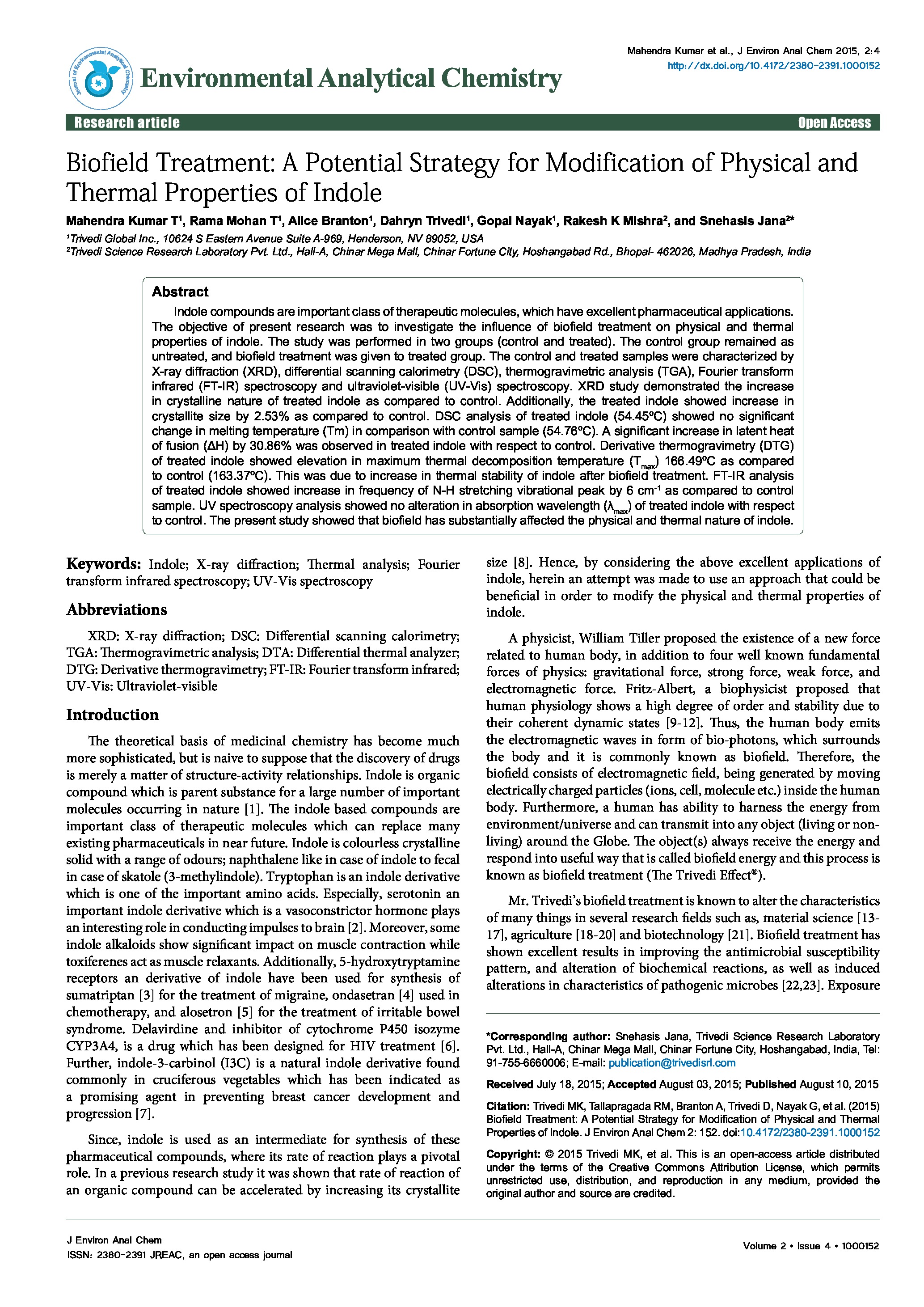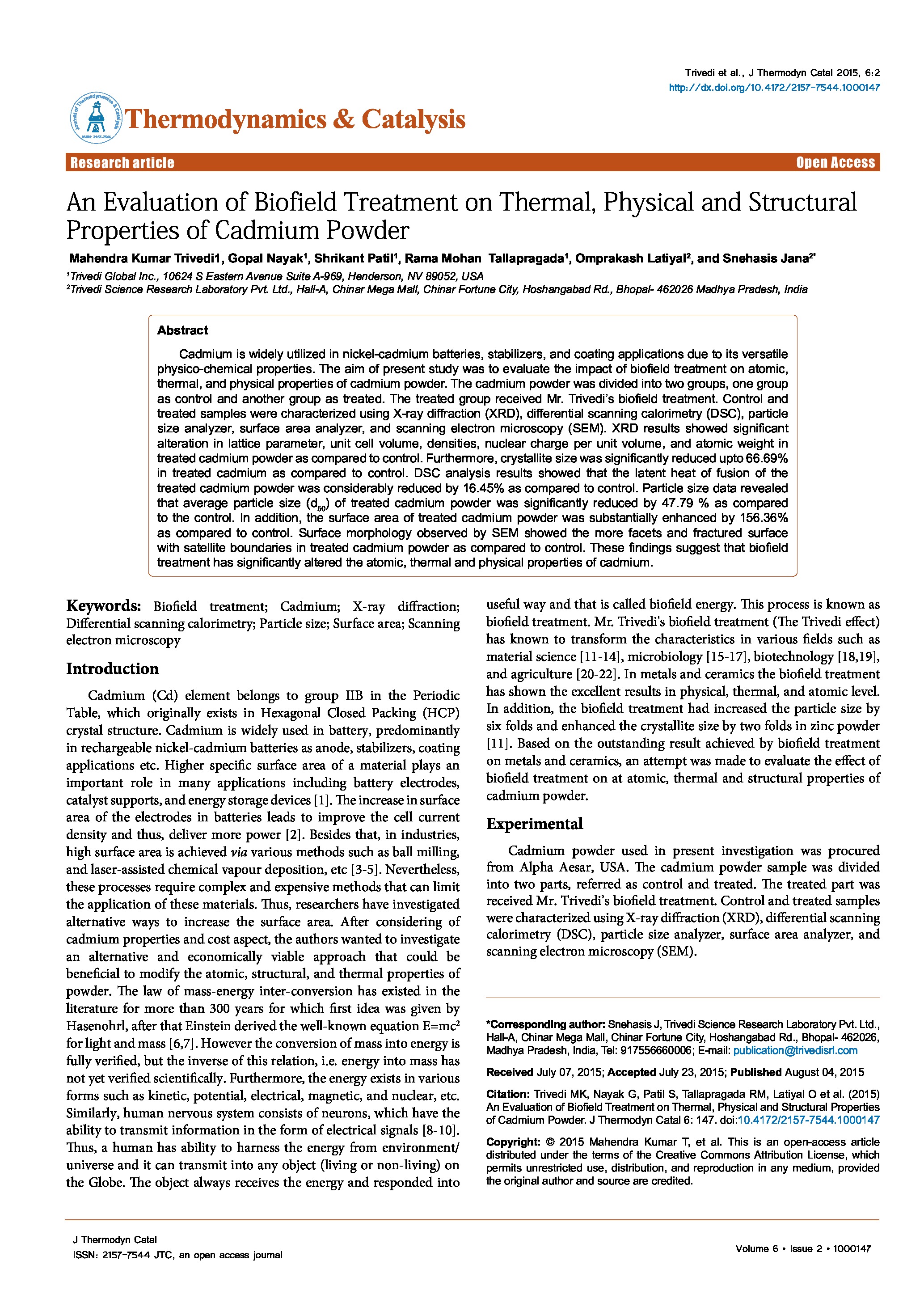Date of upload:
24.12.2016
Co-author:
Mahendra Kumar Trivedi, Shrikant Patil, Rama Mohan Tallapragada, Omprakash Latiyal, Snehasis Jana
Abstract:
Cadmium is widely utilized in nickel-cadmium batteries, stabilizers, and coating applications due to its versatile physico-chemical properties. The aim of present study was to evaluate the impact of biofield treatment on atomic, thermal, and physical properties of cadmium powder. The cadmium powder was divided into two groups, one group as control and another group as treated. The treated group received Mr. Trivedi’s biofield treatment. Control and treated samples were characterized using X-ray diffraction (XRD), differential scanning calorimetry (DSC), particle size analyzer, surface area analyzer, and scanning electron microscopy (SEM). XRD results showed significant alteration in lattice parameter, unit cell volume, densities, nuclear charge per unit volume, and atomic weight in treated cadmium powder as compared to control. Furthermore, crystallite size was significantly reduced upto 66.69% in treated cadmium as compared to control. DSC analysis results showed that the latent heat of fusion of the treated cadmium powder was considerably reduced by 16.45% as compared to control. Particle size data revealed that average particle size (d50) of treated cadmium powder was significantly reduced by 47.79 % as compared to the control. In addition, the surface area of treated cadmium powder was substantially enhanced by 156.36% as compared to control. Surface morphology observed by SEM showed the more facets and fractured surface with satellite boundaries in treated cadmium powder as compared to control. These findings suggest that biofield treatment has significantly altered the atomic, thermal and physical properties of cadmium.




